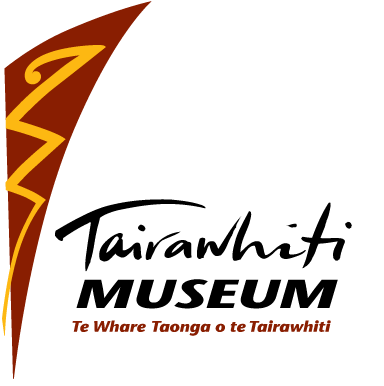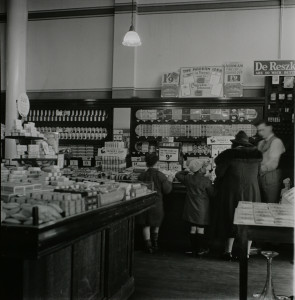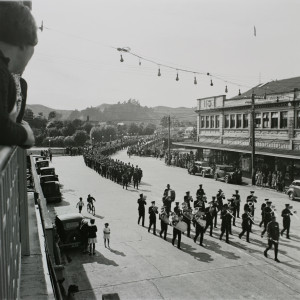Tairāwhiti WW2 Memories: Food and rationing
Tairāwhiti WW2 Memories: Food and rationing
Download as a PDF 5 World War II Food and rationing
Initially preoccupations with food related to the provision of parcels for the armed forces. In March 1940, 299 gift parcels were required for men of the First Echelon, the contents to include : one khaki handkerchief; one half tin of condensed milk or milk and coffee: a tin of sweets (no milk chocolate) or small cakes, biscuits, or shortbread, or a baked cake.Tins of fruit were also suitable for inclusion.[1] In July the East Coast Provincial Patriotic Council appealed to home bakers for help providing the cakes and biscuits which were to be the main items in their quota of 314 parcels for the Second Echelon troops – butter and eggs will be provided where necessary.[2]
Also in July it was the shortage of paper, not meat, which impacted the delivery of meat to suburban customers. Individual orders could no longer be wrapped separately, but delivered on trays as they had been in the past. Householders were asked to provide clean and dust-proof receptacles for the deposit of meat at back-doors, where hand-to-hand delivery cannot be arranged for.[3] The bylaws regarding the wrapping of bread as it was sold over the counter were also relaxed, owing to official recognition of the shortage of paper.[4]
Gisborne retailers prepared for a rush in December 1940 as country people have not been able to do as much of their Christmas shopping as they would have liked, in view of the petrol restrictions, and it is for that reason that businessmen expect individual requirements in those cases to be larger than before. It was thought that holiday makers and campers would not be going so far afield this summer, and places in the district will be more frequented than they were previously.[5]
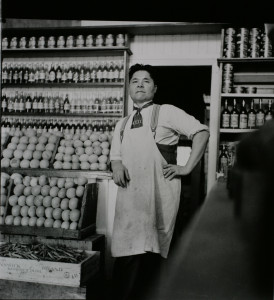
Yet Chung (Chung Pak) fruiterer in his grocery shop Chung Brothers and Co that stood near the corner of Gladstone Road and Derby St Gisborne. John Harold (Jack) Hollamby Collection Tairāwhiti Museum82-6
A cooking demonstration to raise money for the district rehabilitation fund was organised by the R.S.A. social committee in December 1940. Gisborne residents were asked to assist in providing materials for the preparation of cakes and biscuits for the demonstration, and a specialty is being made of cakes and biscuits suitable for dispatch overseas to men serving with the fighting forces. Stoves were installed in the City hall and demonstration sessions were held over two days.[6]
A Soldiers’ Service Club was established here in November 1940, and the cake made in 1941 to celebrate their first year was made in the form of a V for Victory. The cake was surmounted with the inscription, “Lest We Forget,” together with tiny flags and guarded by a miniature replica of a soldier in battle dress, units of the Royal Navy and Royal Air Force, and “field guns. A miniature Union Jack and the New Zealand nag, which were flown on Armistice Day, 1918, flanked the cake.[7]
The supply of electricity was an ongoing concern both during and after the war. In November 1941 the Power Boards’ Association wrote to local power boards proposing that a competition be organised among school children for suggestions as to how electricity might be saved, in view of the necessity for economy in its use.The members of the Poverty Bay Electric-Power Board were not impressed with the idea, and considered that the board should get the results it wants by asking parents to economise … They can deal with the children by proper control.[8]The power supply was still an issue in 1948. A report on the grocery situation in Gisborne in March that year noted that Anticipating further power cuts this winter, candles have been stocked up and are selling freely.[9]
As a result of the lack of imported oranges, orange growers in Gisborne in 1941 found demand exceeding supply.[10] At the end of September a heavy frost was the worst suffered by Gisborne gardeners for many years, and the frost was so severe that orchardists began to show concern regarding their fruit trees.[11] One of the consequences of this was that in November there was a shortage of potatoes as some of the crops had been completely destroyed.[12] Most citrus trees escaped with minor damage, so in 1943 Gisborne was well placed to respond to the appeal for gifts of lemons for convalescent soldier patients.[13]
Another source of vitamin C was wild or sweet briar. Although classified as a noxious weed, the hips could used to make syrup or jelly. In autumn 1942 the Gisborne Plunket Society called attention to the fact that a vitalising jelly can be made from ripe red rose hips. The jelly contains vitamin C and is highly beneficial for feeding to children.[14]
Food rationing was introduced on the 20th April 1942. As a preliminary to this, the Post Office began the issuing of ration books. In order to facilitate this all offices would reopen from 7 p.m. to 9 p.m. from Monday to Friday. In Gisborne, a special temporary office was opened in the Parish Hall in Derby street.[15]Once it was known that rationing was in store, Gisborne shopkeepers have been busy lately with people who have been on an active buying campaign ….. Shops have experienced a keen demand for most articles during the past few months, but the grocery trade has been the busiest during the past week or so. Tea, sugar, and Salt appear to be in greatest demand, and supplies, while sufficient for normal needs, are not adequate to withstand the unprecedented orders that have been coming in during the past week from people attempting to build up their stocks before the official rationing commences. As a result grocers have had to resort to a system of voluntary rationing, supplying their own customers with specified amounts, according to their known needs, and selling to others only when the traders are certain of the new customers’ bona fides.[16]
In spite of rationing, children who attended Mickey Mouse’s big birthday party at the Regent Theatre would still receive a slice of Mickey’s “Chocolate soldier” birthday cake.[17] The birthday party was held again in 1943, this time featuring Mickey’s Wartime birthday cake. A piece for every child. No Currants, as Mickey is saving them for the armed forces.[18]
The rationing of butter was introduced in October 1943, [19] and almost immediately ideas for eking out the supply were published.[20] These were not always satisfactory : Already butter rationing is beginning to create problems for housewives, since butter is indispensable to so many dishes, specially sweets and puddings. Point to this was given by the mother of a family during the week-end when she attempted to prepare something to follow the Sunday hot joint of meat. Opening a modern cookery book, pre-war, of course, she discovered only two sweets or puddings which did not require butter, but these needed eggs, in which she was short-supplied. Preserved fruit had been exhausted long ago, the children “hated” milk puddings (most of which also require butter), so the family had to be content with a one course dinner.[21]
Meat rationing came into effect in early March 1944. Only beef, veal, mutton, lamb and pork, whether fresh, frozen, cooked, or salted, are to be rationed. Bacon and ham will not be formally rationed, though these have been restricted in supply under a separate control scheme for some time.[22] Goods which did not require coupons included Sausages, sausage meat, tripe, liver, canned meat, tongue, brains, kidney, heart, sweetbreads, oxtail, ox heel or cheek, cow heel, calf’s feet, sheep’s head, sheep’s trotters, pig’s head, pig’s trotters, pig’s hocks, stock bones (without meat), dripping, suet, poultry, rabbits, bacon, ham, small-goods, fish, and so were ox skirts, mutton skirts, mutton flaps, trimmings, bones and shin meat if sold for the consumption of animals.[23] People staying in any of the Cook Hospital Board’s institutions now had to take their meat ration coupons with them, as well as their ration books if they remained there for 14 days or more.[24] The sports meeting which was to have taken place at the Show Grounds was cancelled, as due to the butter and meat rationing it has been found impossible to cater for refreshments.[25]
Towards the end of November one Gisborne retailer warned that the outlook is not bright for those desiring a luxury Christmas. The traditional ham was likely to be missing from tables, although it was expected that many grocers probably will adopt the practice of selling small lots as a fairer method than allowing any customers full hams. One store at least, however, is hopeful of being able to satisfy the full ham requirements of most of its customers. No stocks of canned fruits are held by grocers and doubt was expressed whether there would be a further release of supplies before Christmas.Raisins, currants, sultanas and prunes were available, but Dried apricots are unprocurable and muscatels only a future hope…… Supplies of confectionery and cordials also are not as good as last year. Only the humble biscuit seems to be available for the mere asking—and in tins, too. Large stocks of the water variety have recently been received by all grocers, but the sweeter kinds requiring a considerable amount of sugar for their manufacture are in most cases on the list of unprocurables. But, as a veteran shopkeeper observed philosophically: “The mirth of Christmas is in the heart, not the stomach.[26]
The end of the war did not mean the end of rationing, but rationing concessions were allowed for the Christmas of 1945, with extra butter and some types of meat.[27] In spite of that, the Christmas table this year will have little more than it contained a year ago. Sultanas and lemon peel are reported to be in fair supply and while biscuits are not plentiful, it is hoped that there will be sufficient. The scarcity of sugar was expected to affect the availability of tinned fruit and confectionary.[28] It was anticipated that supplies of tobacco and cigarettes would run out in mid-December, with no more due to arrive until the end of January.[29]
The increased demand for tobacco was put down to the large numbers of men discharged from the armed forces, and for the same reason the demand for beer had also increased. However the Gisborne brewery was confident there was no likelihood of a serious shortage developing….Gisborne will be able to secure its supplies throughout the holiday season.[30]
Rationing continued through 1946 : when the Poverty Bay rugby team travelled to Tokomaru Bay to contest the Barry cup with the East Coast, they had to conform to rationing regulations and take their meat coupons with them for the after-match dinner.[31] Christmas that year was expected to be another austerity festive season. Many foodstuffs will be even scarcer than during the war, due largely to shipping difficulties and partly to labour problems and loss of production during the past year…… Last year New Zealanders received one tin of fruit each on production of coupon ration books. This year it appears doubtful if there will be any special allocation of canned fruit for Christmas. Fresh fruit was also scarce.[32]
Meat rationing did not end in New Zealand until September 1948, butter rationing continued until June 1950. In the meantime, New Zealanders were encouraged to save their coupons in order to make more food available for the people in England. Gisborne residents have always been well to the fore in the saving of these coupons, and an appeal in 1947 produced 208 butter coupons, or the equivalent of 1041 b. of butter, and 8421 meat coupons.[33]
– Christine Page, Museum Archivist
[1] The Gisborne Herald 15 March 1940
[2] The Gisborne Herald 1 July 1940
[3] The Gisborne Herald 18 July 1940
[4] The Gisborne Herald 7 October 1944
[5] The Gisborne Herald 19 December 1940
[6] The Gisborne Herald 3 December 1940
[7] The Gisborne Herald 22 November 1941
[8] The Gisborne Herald 28 November 1941
[9] The Gisborne Herald 17 March 1948
[10] The Gisborne Herald 8 July 1941
[11] The Gisborne Herald 30 September 1941
[12] The Gisborne Herald 27 November 1941
[13] The Gisborne Herald 5 November 1943
[14] The Gisborne Herald 21 March 1942
[15] The Gisborne Herald 10 April 1942
[16] The Gisborne Herald 17 April 1942
[17] The Gisborne Herald 13 October 1942
[18] The Gisborne Herald 14 October 1943
[19] The Gisborne Herald 28 October 1943
[20] The Gisborne Herald 13 November 1943
[21] The Gisborne Herald 4 December 1943
[22] The Gisborne Herald 17 February 1944
[23] The Gisborne Herald 21 February 1944
[24] The Gisborne Herald 7 March 1944
[25] The Gisborne Herald 19 April 1944
[26] The Gisborne Herald 23 November 1944
[27] The Gisborne Herald 30 November 1945
[28] The Gisborne Herald 4 December 1945
[29] The Gisborne Herald 14 December 1945
[30] The Gisborne Herald 6 December 1945
[31] The Gisborne Herald 23 August 1946
[32] The Gisborne Herald 9 December 1946
[33] The Gisborne Herald 6 June 1947
